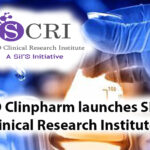Cranberries for Gastrointestinal problems says new research study. Findings of a new research suggests a natural cure in Cranberries for Gastrointestinal problems in adults.


While more research is needed, these findings published in the Journal of Gastroenterology and Hepatology, a top international gastroenterology journal, show that twice daily consumption of 44 mg PAC cranberry juice has the potential to be a natural, complementary management strategy for adults in this population infected with H. pylori
pyloribacterial infection is of worldwide concern due to its high global prevalence rate of over 80% in some developing countries and potential to cause stomach ulcers, which when untreated, increases the risk of developing stomach cancer. 2India is the prototypical developing country as far as H. pylori infection is concerned and more than 20 million Indians are estimated to suffer from peptic ulcer disease. While H. pylori infection is the primary identified cause of gastric cancer, other major risk factors include chronic gastritis, high-salt diets and chemical carcinogens.3,4 Classified as a class I carcinogen by the World Health Organization,5 H. pylori infection is traditionally treated with costly triple or quadruple antibiotic therapies that can have significant side effects and treatment failure rates of 10-30%.6,7
The research , “Suppression of Helicobacter pylori Infection by Daily Cranberry Intake: A Double-Blind, Randomized, Placebo-Controlled Trial” was conducted by key scientists at the Department of Cancer Epidemiology, Peking University Cancer Hospital and Institute in Beijing, China, a leading cancer research center in the world. The study included 522 H. pylori-positive adults between the ages of 18-60 that have never previously received antibiotic therapy for H. pylori infection. Participants assigned to specific groups consumed different amounts of cranberry juice, juice-based powder or their placebos daily for eight weeks with testing performed at 2 and 8 weeks to determine H. pylori suppression rates. Investigational products were standardized to contain different levels of PACs to evaluate their effects on H. pylori suppression.


Previous in vitro studies in Israel demonstrated that a cranberry extract containing PACs inhibited adhesion of H. pylori strains to human gastric mucus and stomach cells.9 Results from in vitro studies provide indicators that are used as background to formulate hypotheses for other human studies.
Cranberry juice (240 ml) containing 44 mg PAC reduced H. pylori when taken twice daily for eight weeks compared to other juice treatments or placebo, showing a statistically significant positive trend over time, but was not effective if taken only once a day or if juice with the lower PAC content of 23 mg was consumed. Participants that tested negative at eight weeks were retested 45 days later after ending treatment and 75% in the juice group remained H. pylori – negative. Some subjects in the placebo group also remained negative at this time point, possibly due to ingestion of unaccounted dietary components with H. pylori inhibitory activity. Statistical analyses were not performed on these data due to limited sample sizes. Additional research is needed to further explore any bacterial eradication effects of cranberry on H. pylori. Participants who remained H. pylori – positive following the trial were provided standard triple therapy antibiotic treatments.
The results of this research provide details on effective amounts of cranberry juice, PAC content and frequency of consumption over an 8-week intervention period. The statistically significant 20% suppression of H. pylori infection rates in this trial following intake of the high-PAC cranberry juice by adults exceeds suppression rates found in previous trials in China10 and Chile11 that tested only one serving size of cranberry juice with unknown PAC levels. Results of the current study suggest that regular consumption of cranberry juice, when administered at certain amounts, has the potential to assist in the management of H. pylori.6 More research is needed to determine broader effects of cranberry juice and H. pylori infection and additional details on the mechanisms of action.
For more information please visit uscranberries.in.
References:
- Zhe-Xuan L, Jun-Ling M, Yang G, Wei-Dong L, Ming L, et al. Suppression of Helicobacter pylori infection by daily cranberry intake: A double-blind, randomized, placebo-controlled trial. J. Gastroenterol Hepatol. 2020 Aug; doi: 10.1111/jgh.15212.
- Suerbaum S, Michetti P. Helicobacter pyloriNew Engl J Med 2002;347:1175-1186.
- National Cancer Institute. (2013) Helicobacter pylori and Cancer. Retrieved from https://www.cancer.gov/about-cancer/causes-prevention/risk/infectious-agents/h-pylori-fact-sheet#r6
- Take S, Mizuno M, Ishiki K, Nagahara Y, Yoshida T, Yokota K, Oguma K. Baseline gastric mucosal atrophy is a risk factor associated with the development of gastric cancer after Helicobacter pylori eradication therapy in patients with peptic ulcer diseases.J Gastroenterol. 2007 Jan;42 Suppl 17:21-7.
- Moss SF. The clinical evidence linking to gastric cancer. Cell Mol Gastroenterol Hepatol 2017;3:183-191.
- Pan KF, Zhang L, Gerhard M, et al. A large randomised controlled intervention trial to prevent gastric cancer by eradication of Helicobacter pylori in Linqu County, China: Baseline results and factors affecting the eradication. Gut2016;65:9-18.
- Graham DY, Fischbach L. Helicobacter pylori treatment in the era of increasing antibiotic resistance. Gut2010;59:1143-1153.
- Hooi JKY, Lai WY, Ng WK, Suen MMY, Underwood FE, Tanyingoh D, Malfertheiner P, Graham DY, Wong VWS, Wu JCY, Chan FKL, Sung JJY, Kaplan GG, Ng SC. Global Prevalence of Helicobacter pylori Infection: Systematic Review and Meta-Analysis. Gastroenterology. 2017 Aug;153(2):420-429.
- Burger O, Ofek I, Tabak M, et al. A high molecular mass constituent of cranberry juice inhibits Helicobacter pyloriadhesion to human gastric mucus. FEMS Immunol Med Microbiol 2000;29:295-301.
- Zhang L, Ma J, Pan K, et al. Efficacy of cranberry juice on Helicobacter pyloriinfection: A double-blind, randomized placebo-controlled trial. Helicobacter 2005;10:139-145.
- Gotteland M, Andrews M, Toledo M, et al. Modulation of Helicobacter pyloricolonization with cranberry juice and Lactobacillus johnsonii La1 in children. Nutrition 2008;24:421-426.











